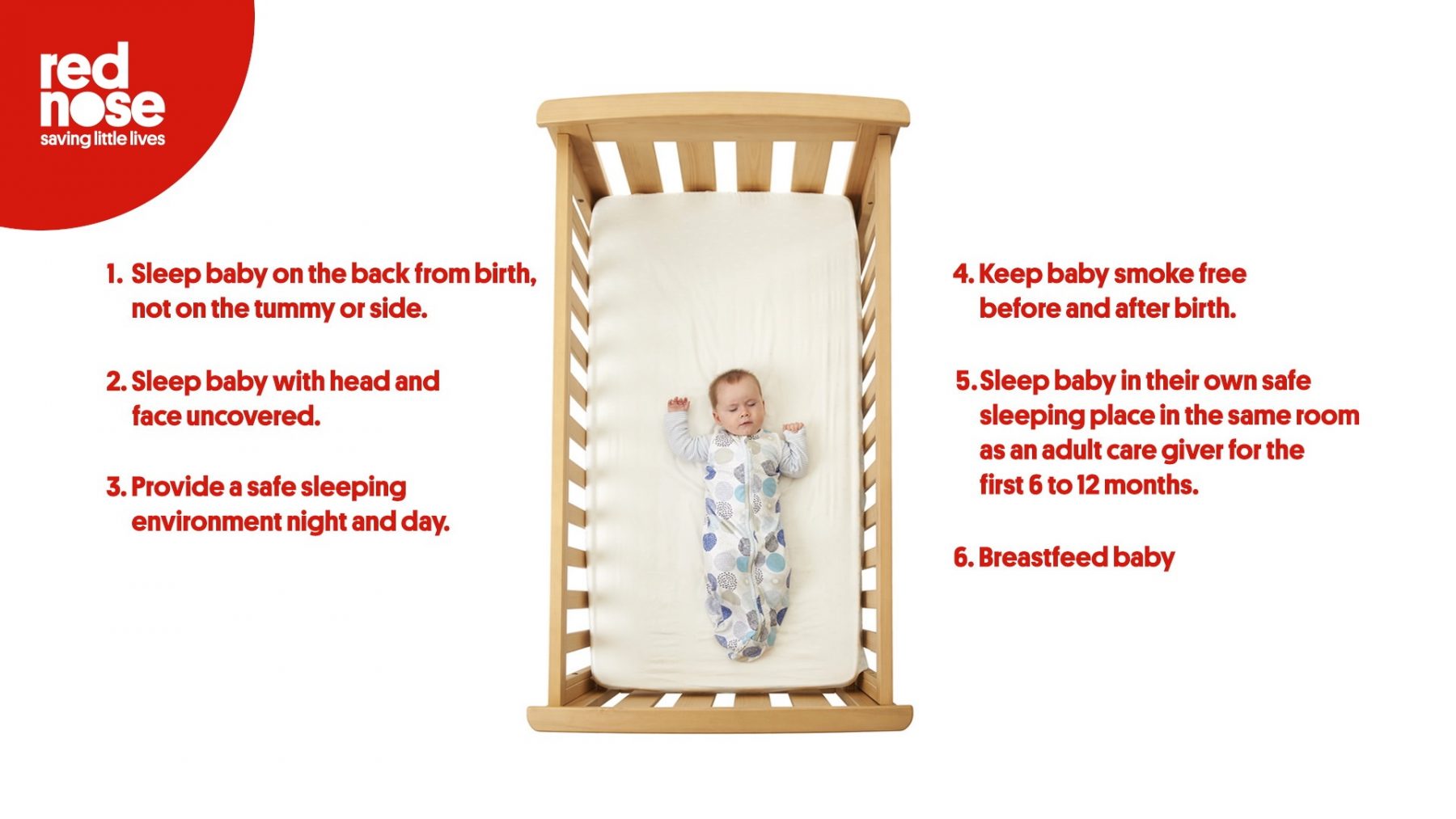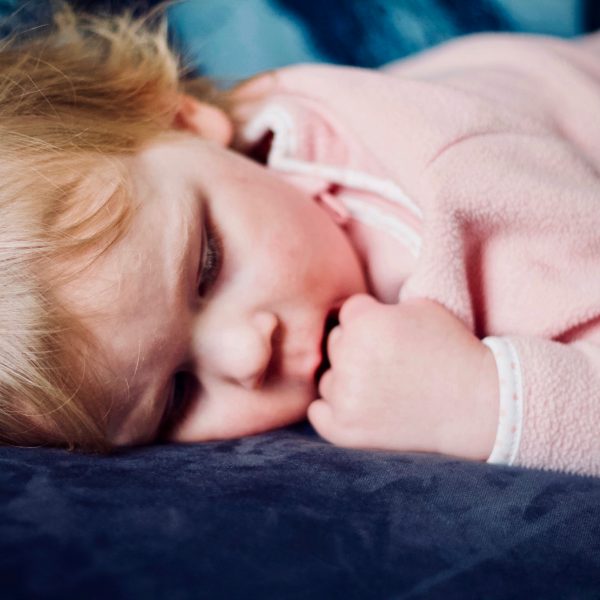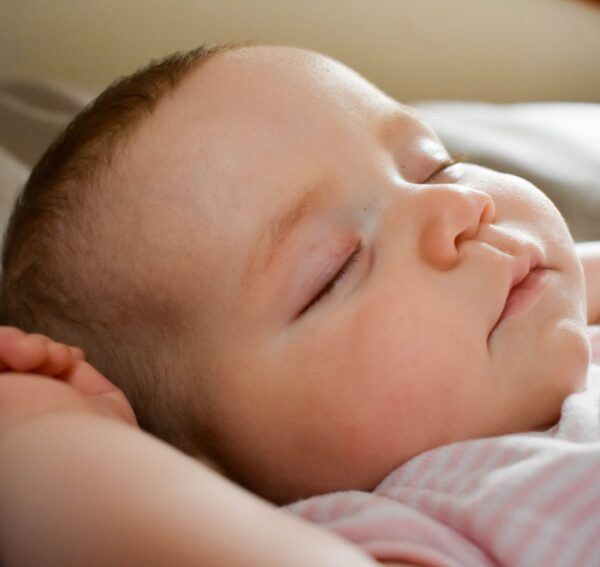Knowing the Safe Sleep guidelines is not enough, QLD regulatory authority says

When it comes to preventing Sudden Infant Death Syndrome (SIDS), and the broader category Sudden Unexpected Death in Infancy (SUDI), knowing the Safe Sleep guidelines alone is not enough to keep children safe, the Queensland Department of Education has said.
Approved providers, nominated supervisors and family day care (FDC) educators have a legal responsibility to take every reasonable precaution to protect children from harm and hazard under the National Law and Regulations.
Developing and following practices and procedures that align with Red Nose’s safe sleeping guidelines will support compliance with this section 167 of the National Law. This includes ensuring that staff have completed training that follows the Red Nose recommendations for protecting babies and children in care and reducing the risk of SIDS.
In many cases educators can help prevent SIDS by following the first four of the six Red Nose safe sleep recommendations in its safe sleeping brochure, the Department said, namely:
- sleep baby on their back
- keep baby’s head and face uncovered
- do not smoke around baby
- ensure a safe sleeping environment.
Approved providers and educators should always follow the Red Nose safe sleeping guidelines, even when a child’s parents or carers request otherwise, information from the Department notes. The requirements under section 167 of the National Law cannot be avoided by an agreement with families.
The only situation in which safe sleeping practice may be modified is when the parents or carers have a certificate from their doctor in which the baby’s doctor recommends in writing that a baby sleep on their tummy or side.
In such cases, the Department said, the service might consider conducting a risk assessment and formulating a risk minimisation plan for that baby.
Explain your service’s policies to parents
Early childhood educators are in an ideal position to educate and influence parenting practices, the Department added.
“When showing new parents or carers around the centre, take the time to explain your service’s policies and procedures around infant sleep — especially back sleeping — and assure them that babies will practise tummy time when they are awake.”
“Educators must be allowed to speak frankly with their leader or supervisor about any concerns surrounding sleep practices, especially any pressure from parents to deviate from procedures.
It is important that service directors or education leaders support educators in their conversations with parents about sleep practices.”
Services can expect that some parents will have personal or cultural preferences that may not align with the Red Nose recommendations. These preferences may include using ‘teething jewellery’, such as amber-beaded necklaces, bracelets or anklets , or swaddling for older babies.
“It is vital that educators remove any necklaces, ties or bows from around the neck of a sleeping baby as they could tighten during sleep and make breathing difficult or become a choking hazard if swallowed,” a spokesperson warned.
Many parents will recognise that wrapping or swaddling is a useful way of helping a baby settle and stay asleep. It has also been shown to improve the baby’s stability and may help them remain on their back.
When choosing to wrap a baby, educators must consider the baby’s stage of development. It is very important to discontinue wrapping as soon as the baby starts showing signs that they can begin to roll. This is usually when the baby is between four and six months of age but it can begin when they are younger. Educators must never wrap a baby who is also being placed in a safe sleeping bag.
Ensure a safe physical environment
The physical design of an infant or child’s sleep environment plays a large part in educators’ ability to supervise and safeguard sleeping infants.
“When auditing sleep environments, educators must carefully consider how to reduce the risk of harm through supervision practices and temperature control,” the Department explained.
“Can educators view sleeping babies through an unobstructed window or a convex mirror while they sleep? Is the room temperature warm enough for comfort yet cool enough to prevent overheating?”
Babies must sleep in cots that meet Australian safety standards and that are regularly maintained and checked for damage. Mattresses must be firm, flat, clean and in good condition and, importantly, they must be the right size for the cot and not result in any gaps around the sides of the mattress/cot.
If an educator elects to use a portacot or folding cot , it must meet the Australian Safety Standard and must be used in accordance with the manufacturer’s instructions with no additional padding added. The use of portacots is also limited for use by a child of no more than 15 kg in weight.
The Australian Competition and Consumer Commission has compiled some information about the use of portacots. Specifically, they advise that these cots are designed for temporary rather than long-term use. As they are subject to more wear and tear due to folding, they are generally less robust than permanent sleeping enclosures such as household cots. Educators must therefore be extra vigilant in checking that portacots are in good working order with no rips, tears or other damage before use.
Educators must never put babies to sleep on mats or mattresses on the floor. Red Nose provides guidance around the transition of a child from a cot to a bed or a mattress on the floor. There are very specific circumstances and measures that need to be put in place for when children (not babies) are able to use a mattress on the floor.
Further advice and support
For more advice on building design and bedding, see the Department’s webpage on sleep and rest physical environment considerations and the Australian Competition and Consumer Commission brochure keeping baby safe.
The department also has a comprehensive collection of sleep learning resources for early childhood professionals, including factsheets on working with families, practice examples and podcasts. This collection of resources was developed in co-operation with University of Queensland research fellow Dr Sally Staton.
For the latest findings on safe sleep practices see the Red Nose website . This information was compiled by the Queensland Department of Education. Access it in its original format here.
Popular

Policy
Quality
Practice
Provider
Research
Workforce
ECEC services to close early for mandatory child safety training under national reforms
2025-12-01 07:10:09
by Fiona Alston

Quality
Policy
Practice
Provider
Workforce
Growth restrictions and enhanced oversight imposed on Affinity Education Group in NSW
2025-12-01 07:30:29
by Fiona Alston

Workforce
Events News
Policy
Practice
Provider
Quality
Gold Walkley Award win for childcare investigation places national spotlight on safety and accountability in ECEC
2025-12-02 07:30:34
by Fiona Alston
















